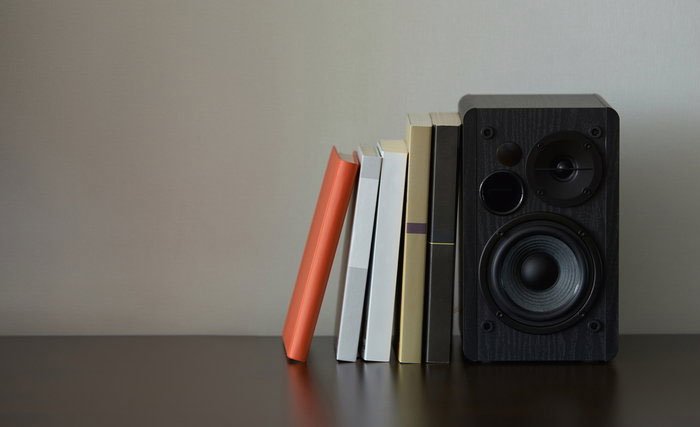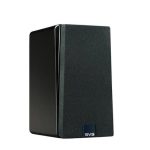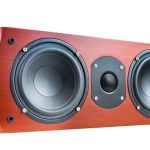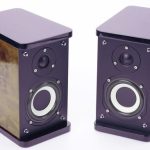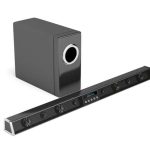Bookshelf speakers are designed to rest on a shelf, table, or any other elevated surface. Like other speakers, doing some research before making a decision will pay off handsomely. While some are geared for music listening, others are tailored to take your movie experience to a whole new level. And just because they are referred to as bookshelf speakers don’t imply that they have to go on a shelf. You can go out of the way and get creative on where to place them.
When it comes to improving the sound coming from the speakers, many people believe that the only way around it is by changing the system. This could mean getting a new amplifier, a better DAC, or even a new set of speakers altogether. While this might work, there could be a much easier solution other than the technology involved.
Altering the positioning of your bookshelf speakers within a room can make a huge difference and great improvements to the overall sound quality and save you a fortune in the long run. The shape of the room is important itself, especially when it comes to a surround sound system, which needs to provide optimal sound performance for multiple listening positions. Also, small deviations in the seating position can make your speakers sound considerably better.
This guideline will teach you how to set up your new bookshelf speakers or even how you can improve your existing sound system.
Bookshelf speakers placement
i. Consider the length of your room
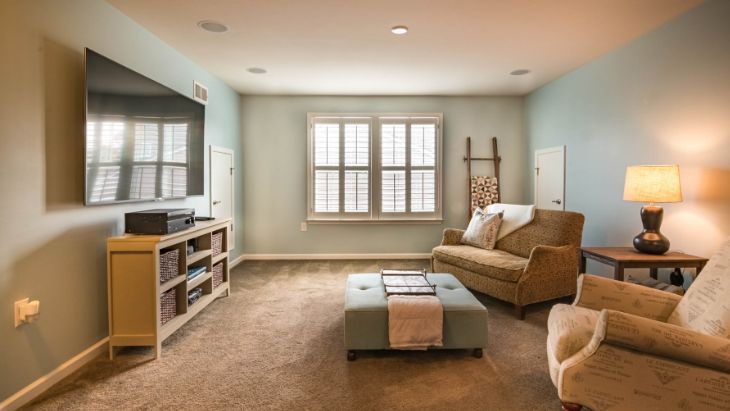
Ideally, your speakers should be placed in a way that they go along with the length of your room. The main listening area should be near the middle of the room but not close to the back wall to help reduce reflections from the walls.
Also, your seat and your speakers should form an equilateral triangle; that is, the listening position should be the same distance from your speakers as they are from each other. If your room permits, try to get 4 feet of separation. If the speakers are too close to each other, the sound will somehow blend and tend to become muddy. If they are too far, on the other hand, there will be a gap between the two halves of sound imaging.
ii. Keep the speakers at ear level
For you to achieve the best sound quality, the listener’s position is as important as the speaker’s position. Bookshelf speakers and loudspeakers generally are designed to sound better when they are positioned at about your ear level. The treble is directional, and mounting your speakers either too high or too low can interfere with this aspect.
Bookshelf speakers should never be set directly on the floor; rather, you can place them on shelves that are tall enough so that the speakers are raised to approximately ear height. Also, placing your pair of bookshelf speakers on sturdy speaker stands instead of putting them on a shelf will help bring the tweeters close to ear level. In addition, some stands come with adjustable height to ensure flexibility. Also, most stands help to absorb reverberations as well as any noise.
iii. Angle your speakers inward for improved soundstage and imaging
For the best soundstage and acoustic imaging, don’t orient the speakers parallel to each other. Instead, the speakers should be angled inwards to create a sort of “sweet spot” by focusing on the listening position. A good soundstage will give you a clear sense of physical space, while good imaging will enable you to visualize where each instrument or voice is coming from.
Soundstage and imaging are critical aspects of a listening experience as they make the music seem to lock into place naturally. You’ll need to decrease the angle if you want good sound over a wide listening area. Also, you’ll need to increase or decrease the angling until you achieve that sweet spot. However, be sure to check your user manual for the correct angling position. It is, however, important to note that some models do not require any angling.
iv. Keep the speakers away from the walls
Always try to position your speakers in such a way that you will leave space between the wall and the speakers, about two to three feet of space. When speakers are close to a wall, they tend to produce over-emphasized bass reflection, making them sound boomy or too loud. Pulling them out will ensure that the bass is tighter, cleaner, and more detailed. This will also help improve the performance of the mid-range and mid-bass.
In addition, you’ll get more sound coming directly from the speakers and fewer reflections from walls and other surfaces. This will translate to more musical details making your music come alive. You can also try limiting reflections off of hard surfaces such as windows and other surfaces like wood by covering the windows with a curtain or using absorptive panels to reduce reflections off of the walls.
v. Place your subs away from corners
If you intend to use your bookshelf speakers for surround sound systems, ensure to keep the subwoofer away from the corners, usually 30 cm away. This will help prevent any unnecessary reverberation or echo. You can also try other locations in the room to see where it will sound the best. If the bass is too muddy, you can use a bass trap to smooth out the frequency response.
vi. Put the speakers on a foam
If you opt to place your speakers on a bookshelf or any other desk, you’ll need to place them on a layer of foam or an equivalent absorptive material. The idea is to prevent the shelf from reverberating and also to keep away the sounds that do not contribute to the overall listening experience.
vii. Keep the front the speakers clear
Avoid putting items directly in front of your speakers. This can mean home décor, small furniture, DVDs, and basically any other object you may have in your entertainment space. Any item in front of the speakers will generally reflect the sound, distorting it significantly, thus ruining your listening experience. Also, isolate your turntable from speaker vibrations by keeping it on a different surface.
Additional Tips
- It is always a good idea to experiment with your speaker placement to determine where they may sound best. Every room is different, and the above tips should serve as guidelines.
- You can use masking tape to mark speaker position on the floor as you experiment with different placement options.
- Finally, the speaker’s sound properties may change over time, and as such, you are advised to repeat the set-up process occasionally or after the speakers have been used for a while.
Michael Evanchuk is a San Francisco-based sound engineer with 20 years’ experience installing, troubleshooting, and repairing commercial, automotive, and household sound equipment. Evanchuk owns an auto stereo center, where he offers highly competitive car audio installation and repair services. He has written dozens of articles on different sound engineering topics, all of which have been published in leading journals, blogs, and websites.

